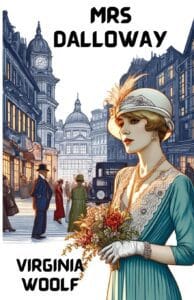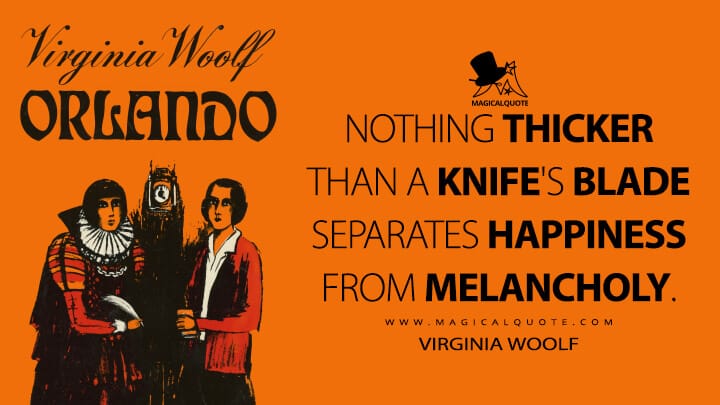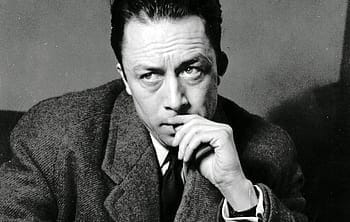Virginia Woolf’s Role in Revolutionizing Modern Literature
Virginia Woolf stands among the most transformative writers of the twentieth century. Through her innovative storytelling, profound psychological insight, and fearless voice for women’s freedom, she helped reshape the landscape of modern literature. Woolf did not just write novels; she reimagined the very nature of fiction itself. Her legacy continues to influence writers and thinkers today, reminding us that the beauty and complexity of human life deserve to be captured with honesty and depth. In this article, we explore Virginia Woolf’s major contributions to literature, and why her voice remains so enduring.
1. Mastering the Stream of Consciousness
One of Virginia Woolf’s most celebrated contributions is her pioneering use of the stream of consciousness technique. Traditionally, novels told stories through an external narrator, with characters’ thoughts described in a distant or structured way. Woolf broke away from this convention. She chose instead to present the unfiltered, flowing inner lives of her characters — their memories, emotions, and fleeting impressions — as they occurred in real-time.
In Mrs. Dalloway (1925), Woolf achieves this with remarkable sensitivity. The novel moves fluidly between the minds of Clarissa Dalloway, a society hostess preparing for a party, and Septimus Warren Smith, a shell-shocked veteran of World War I. Their inner worlds overlap with the external world around them, creating a narrative that feels more like living consciousness than structured storytelling. The novel begins with a simple, yet deeply revealing line:
“I will buy the flowers myself.”
— Mrs. Dalloway
This opening instantly brings us into Clarissa’s private space, setting the tone for a novel where small actions are layered with vast emotional significance. Woolf shows that human life is not a series of grand events, but a collection of inner tremors, memories, and subtle decisions.

In To the Lighthouse (1927), Woolf refines this technique even further. Rather than focusing on dramatic actions, the novel is built on the gentle rise and fall of her characters’ thoughts as they navigate love, loss, family, and the passage of time. Woolf captures the beauty and fragility of these interior experiences through powerful imagery, such as:
“What is the meaning of life? That was all—a simple question; one that tended to close in on one with years, the great revelation had never come. Instead, there were little daily miracles, illuminations, matches struck unexpectedly in the dark.” – To the Lighthouse
— To the Lighthouse
This passage captures the fragility of human existence. It shows how Woolf illustrates the elusive nature of life’s meaning. Through stream of consciousness, Woolf showed that the richness of human existence lies not in external events, but in the flickering, delicate light of the mind.
2. Breaking the Bounds of Time: Nonlinear Narratives
Virginia Woolf also revolutionized how time could be portrayed in fiction. She rejected the idea of time as a straight, mechanical progression. Instead, she depicted time as fluid, subjective, and deeply tied to memory and emotion. In her work, the past and present intertwine, shaping the characters’ perceptions and actions.
To the Lighthouse is a profound example of this approach. The novel is divided into three sections, with the middle section, “Time Passes,” spanning over a decade in just a few pages. This compression of time reflects Woolf’s belief that human experience of time is uneven — it can stretch endlessly in a single moment or pass invisibly over years. She once wrote:
“The past is beautiful because one never realises an emotion at the time. It expands later, and thus we don’t have complete emotions about the present, only about the past.”
— Moments of Being
By portraying time as a living, emotional force rather than a simple chronology, Woolf allowed readers to experience the inner rhythms of her characters’ lives.
“The past is a work of art, free of the struggle of its making.” – To the Lighthouse
This line emphasizes Woolf’s belief that time and memory are not fixed. Instead, they are shaped by perception and emotion.

Similarly, in Mrs. Dalloway, the entire novel unfolds over a single day. Yet within that day, Woolf opens windows into the past, revisiting Clarissa’s youthful loves, Septimus’s wartime horrors, and countless smaller memories. This layered experience of time mirrors how we, too, live — constantly weaving present tasks with reflections, regrets, and longings.
Through her nonlinear narratives, Woolf showed that life is not a clean, ordered journey. It is a complex, layered experience where past and present are always intertwined.
3. Psychological Insight and Character
Perhaps one of Woolf’s most extraordinary talents was her ability to portray psychological depth. Her characters are not simple figures driven by clear motives. They are living beings, full of contradictions, uncertainties, fears, and quiet hopes. Woolf explored not just what her characters did, but how they felt — often revealing feelings they themselves could barely articulate.
In Mrs. Dalloway, Clarissa is outwardly composed, performing her social duties with grace. Yet inside, she questions the meaning of her life, her past choices, and the nature of her identity. She reflects:
“She felt very young; at the same time unspeakably aged.”
— Mrs. Dalloway
This line beautifully captures the tension many people feel — the mixture of vitality and weariness, of present possibility and the haunting weight of time.
Septimus Warren Smith, on the other hand, represents the psychological devastation wrought by war. Through Septimus, Woolf explores mental illness with rare empathy and precision, portraying his hallucinations and despair not as madness, but as a painful, tragic truth that others refuse to understand.
In To the Lighthouse, psychological insight again takes center stage. Mrs. Ramsay, the matriarch of the family, seeks to create moments of unity and beauty for her children and guests. Yet she is also aware of the loneliness and impermanence beneath these efforts. Mr. Ramsay wrestles with his need for intellectual validation, yearning for recognition while fearing failure and oblivion.
Woolf’s compassionate portrayal of inner lives taught readers that even the smallest internal struggle could have profound meaning. She gave dignity to emotions often dismissed or overlooked.
4. Feminist Thought and “A Room of One’s Own”
Virginia Woolf’s contributions were not confined to the structure of novels. She also became one of the most important voices for women’s rights and creative freedom. In her landmark essay A Room of One’s Own (1929), Woolf examined the historical barriers that had kept women from writing and creating art.
She famously declared:
“A woman must have money and a room of her own if she is to write fiction.”
— A Room of One’s Own
Woolf argued that women need financial independence and personal space to nurture their creativity. Without these basic freedoms, women could not fully participate in intellectual and artistic life. She imagined the tragic fate of “Judith Shakespeare,” a fictional sister of William Shakespeare, who, equally talented, would have been denied education, mocked for her ambition, and ultimately silenced.
Another powerful passage from the essay reads:
“Lock up your libraries if you like; but there is no gate, no lock, no bolt that you can set upon the freedom of my mind.”
— A Room of One’s Own
Through these words, Woolf insisted on the right of women to think, to imagine, and to create. Her vision extended beyond literature; it spoke to a broader hunger for women’s freedom and recognition in every sphere of life.
Today, A Room of One’s Own remains a foundational text in feminist thought, inspiring generations of writers, artists, and scholars.
5. Changing Literature Forever: Woolf and Modernism
Virginia Woolf’s work is often placed at the heart of the modernist literary movement. Modernism emerged as a reaction to a rapidly changing world — a world that no longer seemed ordered or certain. Traditional narrative forms, with their clear beginnings, middles, and ends, no longer seemed sufficient to capture the complexity of modern life.
In her essay Modern Fiction, Woolf criticized older styles of storytelling and called for a new approach. She wrote:
“Life is not a series of gig lamps symmetrically arranged; life is a luminous halo, a semi-transparent envelope surrounding us from the beginning of consciousness to the end.”
— Modern Fiction
Woolf believed that literature should capture life’s shimmering, ever-changing essence. Her novels broke away from rigid plots and focused instead on fleeting thoughts, deep emotions, and moments of sudden revelation.
Through novels like Mrs. Dalloway, To the Lighthouse, and The Waves, Woolf helped redefine what fiction could be. She paved the way for later writers who sought to explore consciousness, memory, identity, and time in new and daring ways. Writers such as Toni Morrison, Gabriel García Márquez, and Margaret Atwood have all, in different ways, followed paths Woolf helped to create.
Why Virginia Woolf Still Matters
Virginia Woolf’s contributions to literature are profound and lasting. She reimagined the form of the novel, revealing the beauty and complexity of human consciousness. She broke through old conventions of time and plot, creating stories that flowed with the unpredictable rhythms of memory and emotion. She portrayed her characters with an honesty and tenderness that few have matched. And through her essays, she gave a powerful voice to women’s long-silenced dreams.
More than a century after her birth, Woolf’s work still speaks to us. It reminds us that life is precious, fleeting, and full of hidden meaning. It urges us to listen carefully — to others, and to ourselves. And it leaves us with the hope that even the quietest voices can change the world. Her legacy, like those emotions, continues to expand in the hearts of readers everywhere.


